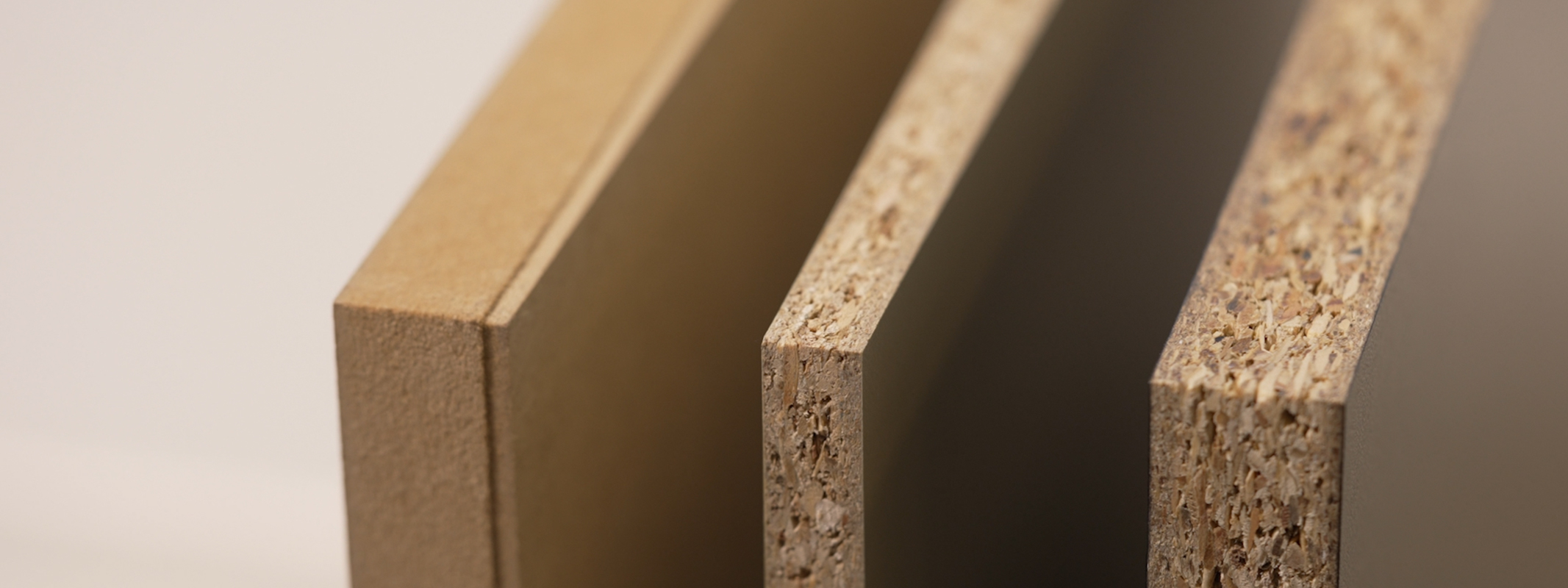Everything you need to know about how we use wood
How often can wood be recycled?
Wood cannot be recycled indefinitely. Every time wood is recycled, the quality of the wood fibres declines. Unilin recycles chipboards up to seven times.
Where does Unilin source the wood used for chipboards, MDF panels and laminate?
Unilin uses two kinds of wood: recycled and reclaimed wood. The first category is wood recovered from waste streams. For instance, the old door you take to the container park is processed in our chipboards. The wood in those chipboards already consists of 95% recycled waste wood.
The remaining 5% comes from reclaimed wood. This is wood that can no longer be used in other industries and is condemned to the incinerator unless we find a new purpose for it. Waste wood from verge maintenance along the motorway is just one example.
Most of our MDF panels are entirely made of reclaimed wood. In 2021 we were the first to develop a solution to recycle MDF waste. In the future this will enable us to also use these boards to produce recycled wood.
Why is building with wood the future?
Wood is a renewable and therefore sustainable material: it cannot become depleted - on condition that we commit to sustainable forestry as this means you never clear more trees than are planted.
Moreover, trees (and therefore wood) provide a form of CO2 storage. Trees extract CO2 from the air and store it in their wood fibres where it stays until the wood is incinerated. The longer wood is used, the better and as luck would have it, wood has an important quality that makes this possible: it is recyclable. Giving it a second, third, fourth... life keeps the stored CO2 out of the air for longer. This makes wood a future-oriented product as well as an excellent alternative to building materials made from depletable raw materials.
What happens to waste wood?
Waste wood is the wood all of us throw away, for instance old furniture or demolition waste. Take this wood to a container park in Belgium and odds are it will end up at Unilin because we are Belgium’s leading wood recycler. The recycled wood is used in our chipboards.
Can wood be recycled indefinitely?
No, unfortunately not. Every time wood is recycled the quality of the wood fibres declines and after a certain amount of time they can no longer be used. Also, sometimes wood is too contaminated to allow reuse.
Nevertheless, we also have a sustainable solution for the wood that can no longer be recycled by converting it into green energy. At the moment we have two green energy plants that are operated in a joint venture with Aspiravi. The energy generated there is used to power our machine park.
How does the recycling process work exactly?
Recycling wood is no easy task. It is often contaminated with pieces of metal and plastic that are included in the waste stream. To guarantee chipboards of high quality, the wood we use must be as pure as possible. Over the last decade we have invested more than €40 million in our own sorting and cleaning process. We now have at our disposal high-tech installations that clean the wood using different techniques and technologies such as magnets, wind sifters, IR and even AI.
Why is it so hard to produce a chipboard consisting of 95% of recycled wood?
If we are to maintain the quality of our boards, they must not contain any pieces of metal or other foreign materials. That is why wood recovered from waste streams must be thoroughly cleaned. Our advanced sorting machines and cleaning technology enable us to produce high-quality wood chips, allowing us to produce chipboards consisting of 95% recycled wood. More is not possible with the current technology. The remaining 5% is sourced from reclaimed wood.
Is incinerating wood a bad idea?
Our guiding principle is to keep wood in the materials cycle for as long as possible because incineration releases the stored CO2. In other words, the longer wood is used, the more time new trees have to extract additional CO2 from the air. By the time the wood is finally incinerated, the released CO2 has already been more than compensated by new trees.
So from that perspective incinerating wood is not necessarily a bad thing. After all, wood can’t be recycled indefinitely, for instance when it is too contaminated or no longer recyclable. To continue the sustainable cycle, this wood is converted into green energy through incineration.
